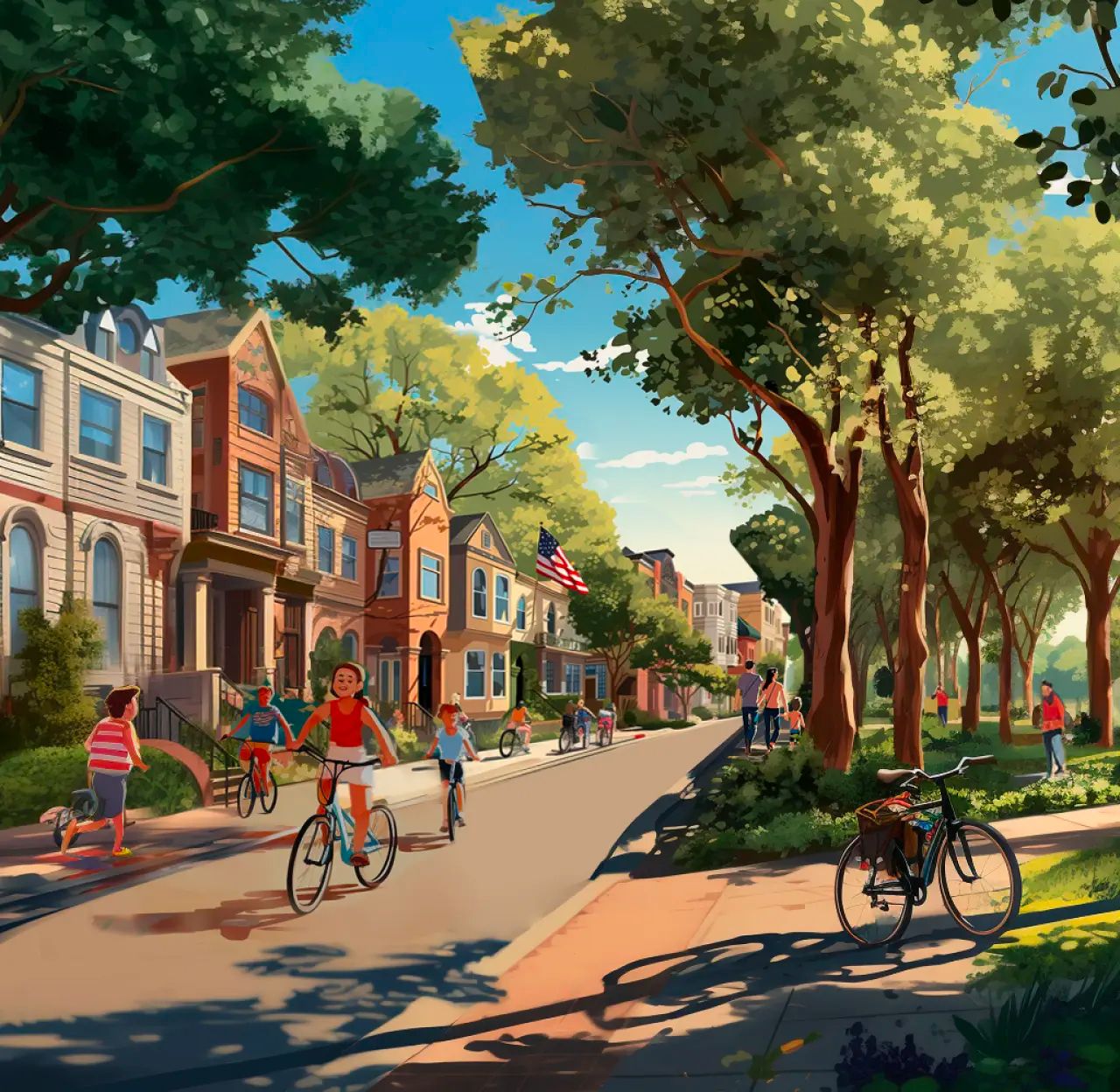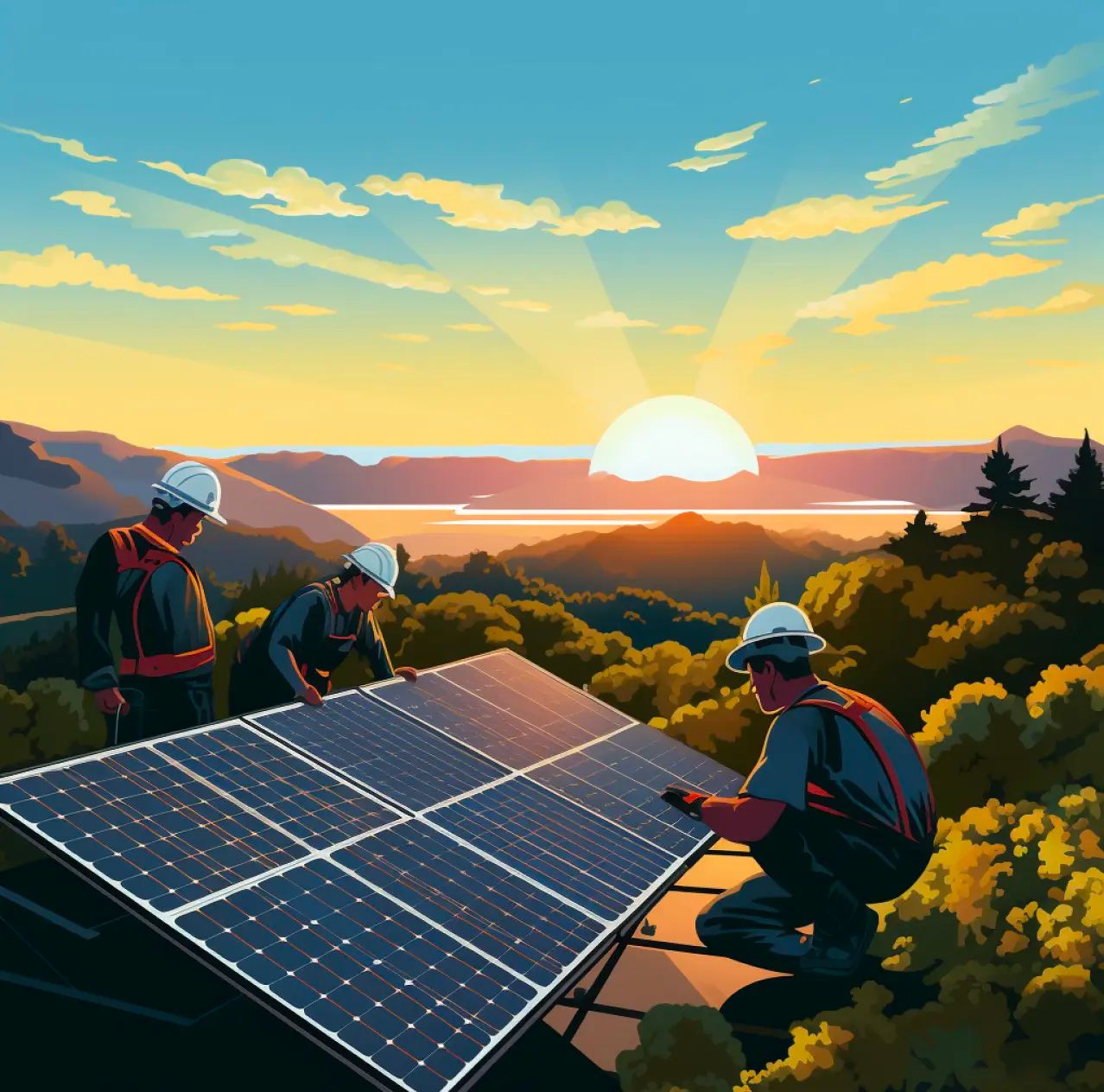The coming-out-from-the-shadows process of Flannery Associates, the VC-backed group hoping to build a new city in Solano County continues with a new, fairly surface-level website for the project, the parent company of which we now know is called California Forever.
My suspicions were correct earlier this week that an illustration being used as a profile photo on Flannery Associates lead Jan Sramek's LinkedIn page was the first in what were likely a set of vision-boarding images for this new city the group intends to build in Solano County. That LinkedIn page has now been updated with a recent photo of Sramek, and his CV has been updated to show that he has been the full-time Founder and CEO of California Forever since July 2017.
A new website for California Forever that went live Thursday, explaining that it is the parent company of Flannery Associates. And it goes on to answer some of the unanswered questions that local officials and journalists have had in the last several weeks, since we learned that Solano County residents had begun receiving a survey about this city project.
For one, the group insists that Travis Air Force Base will not be negatively impacted in any way, and that the "project would protect and support" the base. Also, any agricultural land owners who did not sell to them will, purportedly, see their land protected as well.
"Many nearby landowners are committed to agriculture, and have told us they do not want to sell or develop their properties," the website says. "Their properties will, along with some of our properties, form this agricultural green belt around the new community."

The website also reveals a few new names attached to the project, including former SPUR CEO and pro-density planning expert Gabriel Metcalf — whose LinkedIn page currently has the headline "working on something great." Metcalf decamped to Australia in 2018, taking a job with the Committee for Sydney, but then announced last year he would be leaving that post, saying, "This is a decision driven entirely by personal reasons: it’s time for us to be closer to family in America." (Five years ago he had told the Chronicle that the move to Australia was "a deeply personal decision for me, fulfilling a dream that my wife and I have had of living abroad with our sons, Jonah and Orion.")
We also learn today about another wealthy investor funding this new city: John Doerr of Kleiner Perkins. As the Chronicle notes, Doerr was an early investor in Google and Slack, and he is in similarly high-end VC company with previously revealed backers Michael Moritz, Marc Andreessen, Patrick and John Collison, Chris Dixon, Nat Friedman, Daniel Gross, Reid Hoffman, and Laurene Powell Jobs.
The website lays out a very dreamy and pretty vision for this walkable, Mediterranean-style city by the Bay, tucked among rolling hills, surrounded by farmland. And there is a Disney-esque, Celebration, USA quality to the vision for quaint plazas surrounded by shingled homes and little shops.
As the Chronicle's urban design critic John King succinctly puts it, "The images are as placid as a video aimed at infants; just this side of cartoonish, depicting clusters of vaguely sized storybook homes hugging a terrain that looks more like Italy’s Cinque Terre than the wind-battered ranges of Solano County."


Images of workers and solar-panel arrays have a 1930s New Deal/WPA bent to them.


As for the intentions of this very pie-in-the-sky plan, they do say they intend to address the affordability crisis in the Bay Area and offer different price points of new homes.
"Our goal is to build homes of different sizes and price points integrated in the same walkable neighborhoods, with homes, shopping, dining, and schools all within walking distance," the website says. "We are also interested in exploring new paths to homeownership for Solano residents through down-payment assistance programs and other solutions."
But the rollout, as of now, has not won them any political friends, and most experts in planning and California law have been quick to say this is going to be, at best, a Herculean feat of lobbying, signature gathering, vote wrangling, and legal wrangling, if it ever gets done.
"They’re on a mission," says State Senator Bill Dodd, who represents the area, speaking to the New York Times after meeting with Flannery's reps. "They want to create another city in Solano County. I think they’re off to a very bad start."
That bad start began with the steady and quiet accumulation of vast tracts of land without assuring any local leaders that they were not some nefarious, foreign actor with designs on compromising Travis Air Force Base. That led to federal investigations — which apparently were just getting started or didn't get very far, because it seems like the Times only needed about a week to get to the bottom of who these folks were.
"The only way to avoid creating a rush of reckless short-term land speculation was to not share our specific plans until we finished acquiring the properties," the California Forever website says. "We are now excited to move on to the real work of building a thoughtful and consensus-minded plan for eastern Solano."
It sounds like, per the Times' sources, since the beginning of this year when Metcalf came onboard, the group has hired about three dozen employees working on "design, engineering and urban planning."
On the website there is some very superficial addressing of questions about water — like where it will come from in this dry area — and fire risk on the website. The group says it intends to aid upgrades to the North Bay Aqueduct — which the Solano County Water Agency said, in an undated report, had been identified as having "the poorest drinking water quality in the State Water Project." But, California Forever says, "We cannot, of course, solve a multi-county drinking water supply problem on our own, but we want to be part of a larger solution to bring clean and reliable water to existing cities as well as our project."
If water rights and access don't prove to the be hugest obstacle, there are also just the logistics and political tasks around re-zoning that could mire this project in red tape for many years. The group is already talking about Solano County's Orderly Growth Measure, reaffirmed by voters in 2008, which will be another hurdle. The groups says that they agree with the measure — even though it restricts all growth to existing cities — and they know that they will need to get voters on board with their plans likely by next year if they are ever going to move forward.
And, as King points out, the group looked back to a pre-1970 plan for Bay Area growth that many preposterous elements in it — including a new bridge between SF and Angel Island — and dusted off the part that suggested development in eastern Solano County.
The pushback from environmentalists and the planning community that supports more dense construction around existing transit and cities will be loud and strong.
This post has been updated with commentary from Chronicle critic John King.

